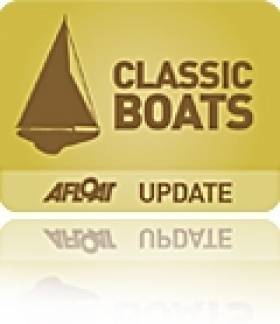Displaying items by tag: Tempest
#classicboat – Cowes Classics Week has an eligibility policy with a rolling 50 year design date. This means that three new classes become eligible in 2015 and are preparing to celebrate their anniversary at Cowes Classics Week 2015 writes Dave Elliott.
Tempest: designed by Ian Proctor for the 1965 trials for the new Olympic Keelboat used alongside the Star in 1972 in which the British won the Silver Medal and as the two-handed keelboat in 1976. The Tempest is unusual for a keelboat in having a trapeze and can reach remarkable speeds.
Soling: designed by Jan Linge of Norway in 1965 based on ideas that emerged while tank testing a 5.5mR for the 1960 Olympics, ideas which were outside the 5.5mR rules. The Soling was selected as the men's triple-handed boat for the 1972 Olympics in selection trails at which it was the only survivor in heavy conditions at Kiel and remained an Olympic class until 2000.
Contessa 26: designed by Jeremy Rogers and heavily influenced by David Sadler and the Folkboat to produce a 25.6ft fibreglass boat that proved to be a very successful racer and capable of long-distance, blue-water cruising.
In addition, other new classes that will join us in 2015:
Star: designed in 1910 by Francis Sweisguth—draftsman for William Gardner's Naval Architect office and has been an Olympic class since1932 until 2012 - it will not compete in 2016. They will wear their artist-designed sails - Fine Arts Sails have produced a set of sails with designs by renowned artists and are coordinating events for the class in support of the Andrew Simpson Sailing Foundation.
Royal Burnham One Design: designed by Norman Dallimore in 1932, the RBOD is similar in hull profile to the Alfred Westmacott designed XOD. Continuing our ambition to get together one-design classes from around the country as they are not well set up for travelling, CSCCW will be assisting with bringing some of the boats to Cowes.
Cruisers (non-Spinnaker): a new class that will appeal to those not so well set up for racing.
And, we are assured by the class associations of increased turnouts from XOD (the largest class that should reach 60 boats), Sunbeam and Daring (both of which have more boats in action than ever before as boats are restored, recovered or built/rebuilt) and 6mR (one of the most iconic classes ever).
























































